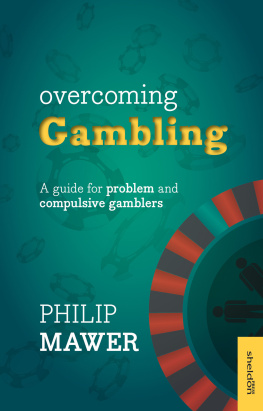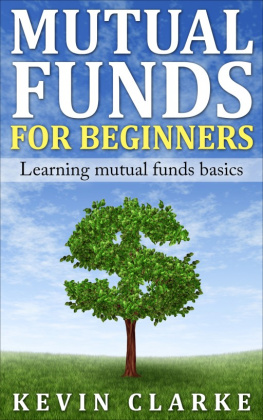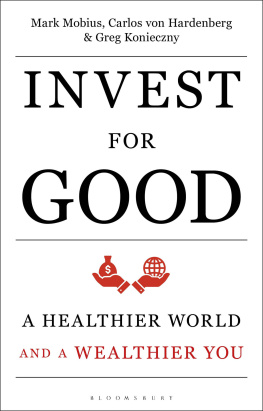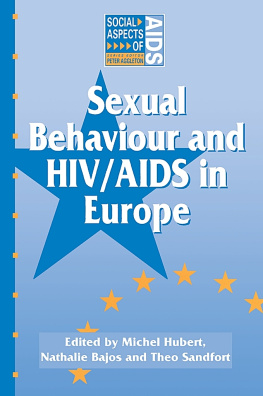CANADA THE GOOD
CANADA THE GOOD
A SHORT HISTORY OF VICE SINCE 1500
MARCEL MARTEL
Wilfrid Laurier University Press acknowledges the support of the Canada Council for the Arts for our publishing program. We acknowledge the financial support of the Government of Canada through the Canada Book Fund for our publishing activities.
Library and Archives Canada Cataloguing in Publication
Martel, Marcel, 1965-, author
Canada the Good: A Short History of Vice since 1500 : a short history of vice since 1500 / Marcel Martel.
Includes bibliographical references and index.
Issued in print and electronic formats.
ISBN 978-1-55458-947-0 (pbk.).ISBN 978-1-55458-948-7 (pdf).ISBN 978-1-55458-949-4 (epub)
1. CanadaMoral conditionsHistory. 2. CanadaSocial conditionsHistory. 3. Vice controlCanadaHistory. 4. Social controlCanadaHistory. 5. Vice History. 6. VicesHistory. I. Title.
HN110.Z9M6 2014 306.0971 C2013-906608-X
C2013-906609-8
Cover design by Sandra Friesen. Cover photo: Seizure of drugs, November 22, 1968. York University Libraries, Clara Thomas Archives & Special Collections, Toronto Telegram fonds, ASC00718. Text design by Angela Booth Malleau.
2014 Wilfrid Laurier University Press
Waterloo, Ontario, Canada
www.wlupress.wlu.ca
This book is printed on FSC recycled paper and is certified Ecologo. It is made from 100% post-consumer fibre, processed chlorine free, and manufactured using biogas energy.
Printed in Canada
Every reasonable effort has been made to acquire permission for copyright material used in this text, and to acknowledge all such indebtedness accurately. Any errors and omissions called to the publishers attention will be corrected in future printings.
No part of this publication may be reproduced, stored in a retrieval system, or transmitted, in any form or by any means, without the prior written consent of the publisher or a licence from the Canadian Copyright Licensing Agency (Access Copyright). For an Access Copyright licence, visit http://www.accesscopyright.ca or call toll free to 1-800-893-5777.
INTRODUCTION
F ew people would refer to compulsive gambling, excessive drinking, and drug or sex addiction as vice. On the contrary, many believe that the inability to control drinking, drug taking, or gambling is a symptom of a disease rather than evidence of lack of self-control or of a morally weak character. However, not that long ago, these behaviours were labelled as vices, demonstrating an individuals inability to control him or herself. This inability had, according to those who denounced these behaviours, devastating consequences for individuals afflicted by these habits, and also their immediate family and surrounding community. If the term vice is inaccurate in todays society, although some continue to use it, Canadians are still uneasy about these behaviours. As a society, we still devote a huge amount of attention to identifying and solving these perceived social problems. And individuals are reluctant to be associated with them, even indirectly. Many financial advisers will suggest investing in vice because such an investment is a sound financial decision. Between 1965 and 2006, owning a stake in an alcohol, gambling, or tobacco company guaranteed an annual rate of return of 3.5 percent. But despite the lure of such healthy profits, individuals and mutual funds have been reluctant to invest in this type of stock, precisely because of the questionable nature of the companies activities. After all, who would take pride in supporting the tobacco industry, when it sells a deadly product? And what about gambling enterprises? Do they not bear social responsibility vis--vis compulsive gamblers and gambling addicts who have lost so much money that suicide sometimes becomes their preferred option?
To explain why individual and institutional investors continue to be bothered by the stigma of vices, we need to take into consideration the more than five hundred years of debates and regulation that have conditioned Canadians attitudes in this regard. Certain behaviours still raise controversial and divisive social issues, and questions remain about how society and governments should deal with them.
Vice might seem an odd word to use, since it appears to have fallen out of popular use. It is still worthwhile to define the term. According to the Oxford English Dictionary, vice is a depravity or corruption of morals; evil, immoral, or wicked habits or conduct; indulgence in degrading pleasures or practices. This definition implies behaviours that are damaging, since they corrupt individuals, but also reprehensible and highly condemnable, since they are identified as immoral. Finally, the definition implies that people who indulge in vice are individuals who enjoy forms of pleasure that are unhealthy and disrespectful.
Based on this broad definition, what precisely constitutes a vice? Is eating chocolate a vice? The answer is obviously negative. In fact, some physicians recommend eating chocolate every day for its health benefits. Is eating an entire big box of chocolates every day a vice? One might answer that eating such a large amount of chocolate can be detrimental to an individuals health. Many would question the eaters motives. Some would interpret this behaviour as the sign of an eating disorder, especially if the habit were to become a pattern. Consumption on this scale has consequences. While it might bring pleasure to some, others would question the type of pleasure being gained. The critic would insist upon the destructive consequences for an individual who has a pattern of ingesting chocolate in excessive amounts. Still others would call it gluttony, thereby invoking the Seven Deadly Sins, or Capital Vices, enumerated by Dante in his Purgatorioanger, avarice, gluttony, jealousy, laziness, lust, and prideand supported by Judeo-Christian morality.
Vice is not limited to Dantes famous list. The Index of Christian Art, founded by Professor Charles Rufus Morey in 1917 and now hosted on the Princeton University website, labels more than 118 behaviours and habits as vices. Besides the Seven Deadly Sins or Vices, called deadly by Christians because they bring death to an individuals soul, there are others that are still immoral, unhealthy, and disrespectful, such as blasphemy, drunkenness, fornication, infidelity, intemperance, pleasure, and poverty.
I will not undertake to look at 118 vicesthis would be a monumental task. In my brief exploration of how Canadian society has dealt with vice over the last five hundred years, I target vices that have been dealt with most extensively by state and societal institutions. I address various aspects of sexuality, such as attempts to control childbirth and to restrict sexual relations with prostitutes, same-sex partners, and unmarried persons, since at different times these were stigmatized as fornication, lust, sodomy, and infidelity. Drinking alcohol, and consequent drunkenness, was often regarded as a vice because it was a sign of intemperance. Drug use and smoking have also been The consumption of drugs for non-medical purposes was vilified in the second half of the nineteenth century because it allowed the user to escape reality and social responsibility. Drug users, according to opponents, acquired habits that were destructive to themselves and those surrounding them. Opponents of tobacco used the term vice
Next page










